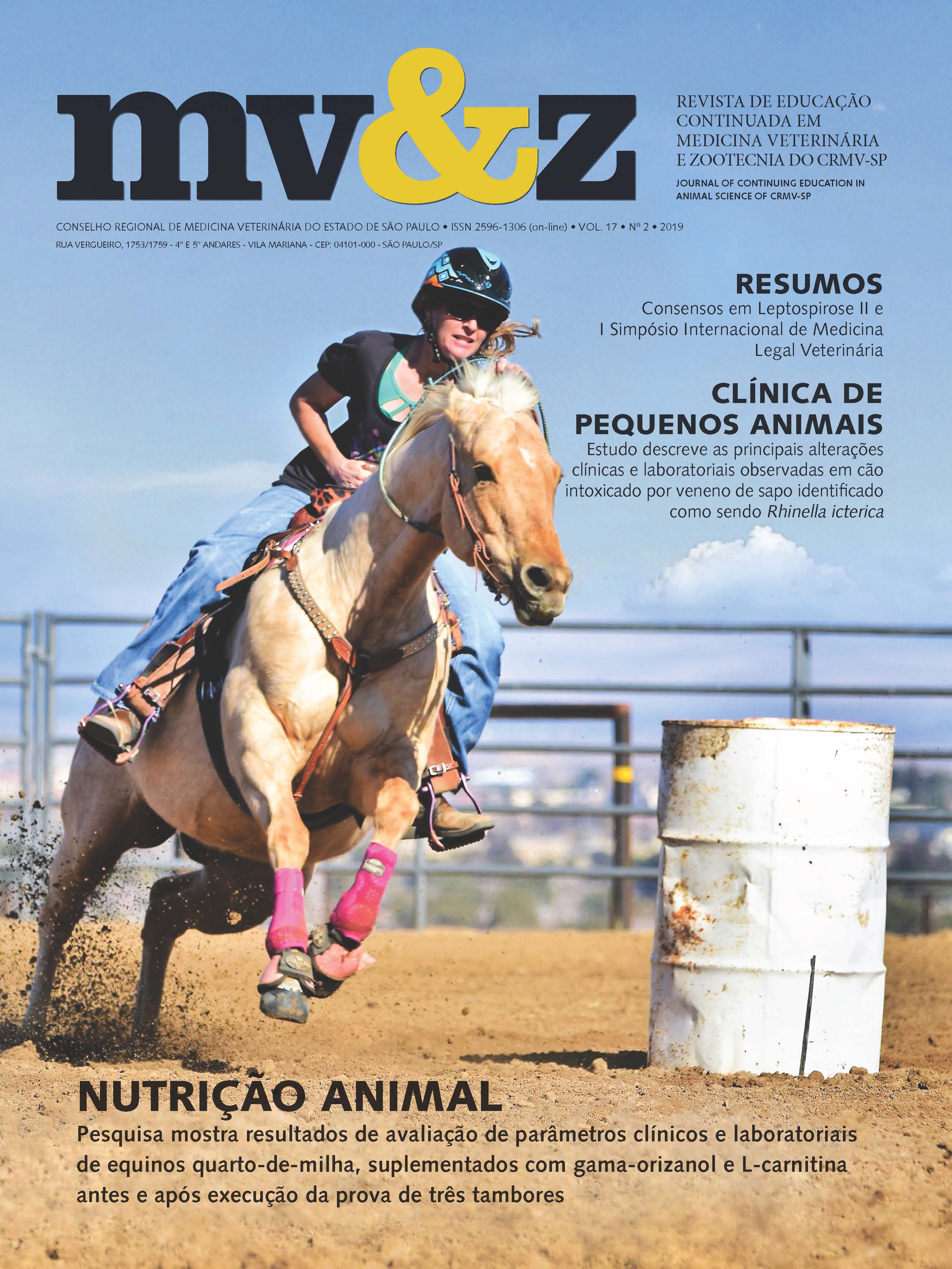O uso da dimetilarginina simétrica (SDMA) no diagnóstico e estadiamento da doença renal crônica em felinos: revisão de literatura
Conteúdo do artigo principal
Resumo
O objetivo desta revisão de literatura é descrever os testes laboratoriais utilizados rotineiramente na clínica de pequenos animais para a detecção da doença renal crônica (DRC) em felinos, enfatizando o diagnóstico precoce desta afecção pela utilização de uma nova ferramenta laboratorial, a dimetilarginina simétrica (SDMA). A DRC caracteriza-se pela perda progressiva e irreversível dos néfrons, sendo a filtração a função mais básica dos rins, correlacionada, assim, à taxa de filtração glomerular (TFG) e à massa renal funcional. Embora a mensuração da taxa de filtração glomerular F seja método de referência para a avaliação da função renal, seu uso infrequente permite o uso de marcadores alternativos, como a concentração de uréia e creatinina séricas. O SDMA é uma molécula estável, sendo amplamente excretado pelo rim, o que o torna um bom candidato à biomarcador renal, pois seu tamanho e carga permitem que seja livremente excretado por filtração glomerular. A dosagem do SDMA é extremamente precisa, sendo o diagnóstico precoce de DRC possível atualmente, intervenções renoprotetoras que retardam seu progresso, ou visam estabilizar a doença, são possíveis.
Detalhes do artigo
Seção
1. Autores mantém os direitos autorais e concedem à revista o direito de primeira publicação, com o trabalho licenciado sob a Creative Commons Atribuição-NãoComercial-SemDerivações 4.0 Internacional
2. Autores têm autorização para assumir contratos adicionais separadamente, para distribuição não-exclusica da versão do trabalho publicada nesta revista (ex.: publicar em repositório institucional ou como capítulo de livro), com reconhecimento de autoria e publicação inicial nesta revista.
3. Autores têm permissão e são estimulados a publicar e distribuir seu trabalho online (ex.: em repositórios instituicionais ou na sua página pessoal) a qualquer ponto antes ou durante o processo editorial, já que isso pode gerar alterações produtivas, bem como aumentar o impacto e a citação do trabalho publicado (Veja O Efeito do Acesso Livre);
